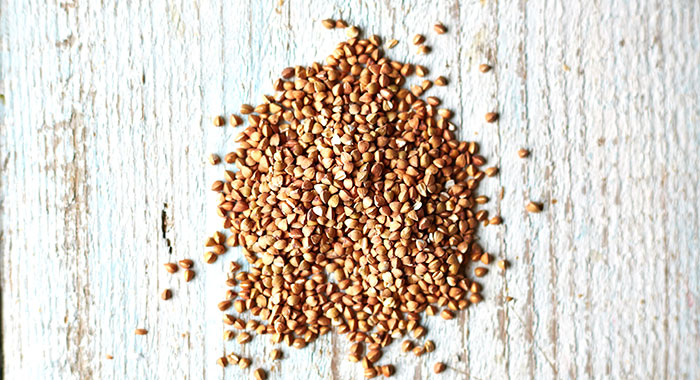
Pronounce it: buhk-weet
Buckwheat actually comes from the seeds of a plant distantly related to rhubarb and is neither related to wheat, nor, technically, a grain. It is usually found in ground form, but can also be bought as wholegrain groats, cracked as flakes or cereal, and in processed foods such as pasta. Delicious in salads, it lends itself well to being mixed with other pseudo-grains such as quinoa. Buckwheat flour can be added to pancakes, muffins, blinis and soba noodles. Healthwise, buckwheat is a good source of protein, containing all the essential amino acids. It is an excellent source of manganese and magnesium and a good source of selenium, niacin, folate, iron, zinc, copper and phosphorus. It is also rich in phytochemicals and is gluten free.
Prepare it
Always make sure that the hulled buckwheat groats have been roasted or toasted and then rinsed before cooking.
Store it
Maximise the life of buckwheat by storing it in an airtight container in a cool, dark place.
Cook it
Place the toasted buckwheat in a pan with two parts water to one part buckwheat. Once boiling, reduce the heat and simmer for 10 – 12 minutes until tender, then drain off any excess liquid.
Alternatives
Try quinoa.
Be the first to comment on "Buckwheat"